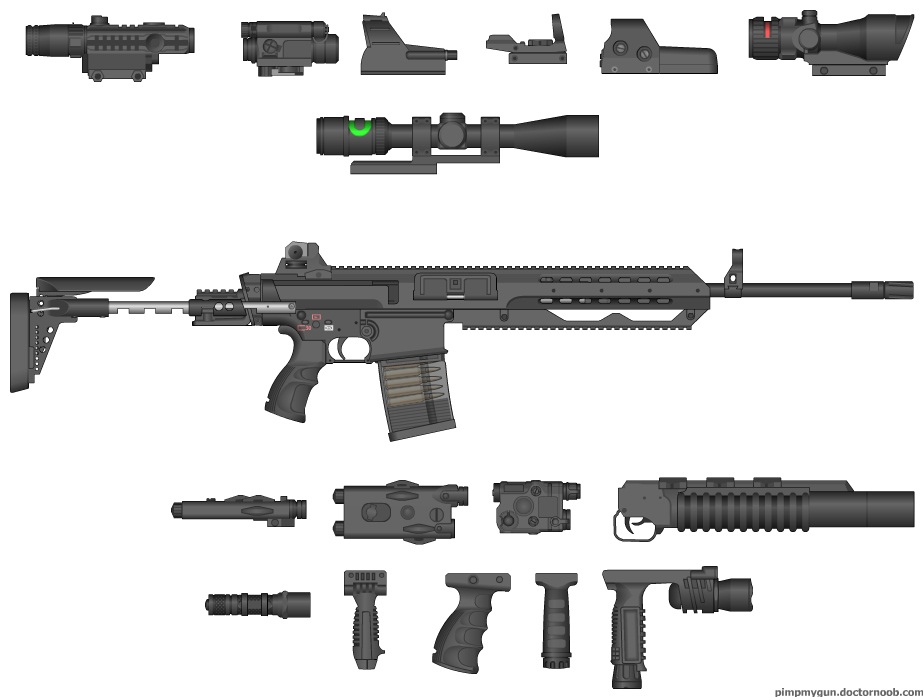
Welcome Message
Welcome to Project FRAME: Future Robotics Advancement in Modular Elements
Mission Statement:
This is a collaborative discussion website meant to take the world's technological development to the next level. It was started by Moshi Badalov, Freshman student at the University of Arizona. The scope of this project is physically impossible to carry out by a single engineer with a vision, so this website was created to make the endeavor reasonable.
The focus of this project is to discuss and conclude practical methods that will globally standardize an (affordable) advanced robotics parts system for land based robots and vehicles. Advanced land robots especially feature walking machines, which will inevitably become of wide use in the world's future, across very many industries. The purpose of this discussion is to determine how to, just like the automobile industry, create a globally standardized etiquette for building advanced land-based robots and vehicles who's parts are modular. This means that any assembly (such as the legs, if it walks) can easily be switched out with elements from an entirely different company. For example, if you want to upgrade your American car, you can do it with car parts from Japan, or any country that has the same car model on the streets. Just imagine this idea with advanced robotics, where certain robot frames are as standard as certain car frames.
If you wish to author posts on this blog, kindly send an email to moshibadalov@ymail.com. You are requested, however, to please watch this public presentation that led to the creation of Project FRAME. It explains the significance of this project clearly: http://www.youtube.com/watch?v=IO79r39_11Q.
Also, take a skim (or a full read, if you please) of the online research paper that corresponds to the presentation: http://www.scribd.com/doc/146767581/Analysis-and-Development-of-Advanced-Robot-Designs.
The content in the above links are of vital importance to Project FRAME.
Anyone is free to share ideas, photos, and videos to communicate their opinions on how to develop this into reality. If this discussion gets enough participants, it might shift into an official website. It's time to engineer the next generation of robotics.
Friday, November 15, 2013
Necessity for Multiple Categories of Modular Frame Types, As Well As Component Types

Wednesday, November 13, 2013
Modularity: a starting point
Modularity in Media - A Modern Dream (and reality)
I remember long ago that one of my favorite flash games was the Lego Mindstorms RCX StormRunner game. The game, launched in the year 2000 (yeah, we're getting real nostalgic up in here) featured programmable RCX robots which you used to perform tasks in a hostile alien environment. More to the point, the RXC robots featured customizable parts. You could equip them with tracked or legged mobility, with a couple types of attachments, and with a variety of sensors. It was my first real encounter with robotics, modularity, and programming, and I loved it.
I digress - the point of this rambling nostalgic intro is that modularity is a compelling concept. Here's a much more recent example: PhoneBloks, the modular phone sensation that took phone-lovers' facebook feeds by storm this year.
It's an extremely similar concept to what we're proposing with Project FRAME, and it's gathered quite a bit of traction in public interest. So maybe we could do the same thing. We could call it RobotBloks... or RoBlox... whoops.
Which brings me to my point. Modularity is a huge deal in the public opinion. I'd venture that a large part of the reason Minecraft is so incredibly popular is that it's so modular.
And let's not forget astromech droids like R2-D2 in Star Wars which seem to plug into everything.
The point is, people love modularity. It's a great tool for the user of any technology, enabling easy specialization and repair. It's already a reality in many places: desktop computers, cars, military weapon attachments, and - perhaps humblest of all - 3-ring binders.
With Project FRAME, we aim to help bring modularity to the next level with the promotion of advanced modular robots for a variety of applications. Join us, and help bring on the robotic revolution. The kind that helps humanity, not the kind where they take over the planet. Although that kind is always fun too.
Welcome to Project FRAME
- Max telling Charlie how he upgraded Atom, in the movie Real Steel.
 |
| Ambush Noisy Boy Atom |
I'm not here to deliver ideas from Hollywood, but we all know that machines are built from parts that are otherwise separate elements. What we seem to take for granted is that some machines in our world are made in a way where the composing elements can be traded out with completely different parts. I don't blame anyone; it's not very normal to think about how a Honda Accord with a V4 engine can so easily be refitted with a V6 engine. The thought only comes to mind when you actually want to modify the car intentionally.
Then there's the concept of adding parts without removing others, because the frame of the machine has vacant connection ports that have been standardized to allow any of a full set of custom parts. Take for example the pylons on fighter jets, such as the common F-16. Let's see what any of the pylons on the wings can hold...external fuel tanks? air-to-air missiles? laser guided bombs? Oh, I know - an advanced navigation system! How about at least one of each all at once? We have enough space for it, after all!
 |
| Maverick Missiles |

But wait...it seems other fighters can use the exact same attachments that we just put on our F-16. Observe: the AGM-65 Maverick air-to-ground missile on both the F-16 and the F-15:
 |
| F-16 with green Maverick missiles F-15 with grey Maverick missile |
 Keeping to the theme of military, let's look at another globally standardized frame: gun rails. Specifically the Picatinny rail system (which has been standardized, unlike the Weaver rail system). Any guns with this rail system can be fitted with the same scopes, holographic sights, flashlights, laser pointers, grips, grenade launchers, etc, no matter the gun.
Keeping to the theme of military, let's look at another globally standardized frame: gun rails. Specifically the Picatinny rail system (which has been standardized, unlike the Weaver rail system). Any guns with this rail system can be fitted with the same scopes, holographic sights, flashlights, laser pointers, grips, grenade launchers, etc, no matter the gun.
[A slice of a gun rail mount]
The concept being addressed is known as modularity. I'm sure we all have a strong understanding of what this means, but let's review the technical denotation of the word, pulling definitions from several dictionaries:
mod·u·lar·i·ty:
a) "The degree to which a system's components may be separated and recombined."
b) "Designed with standardized units or dimensions, as for easy assembly and repair or flexible arrangement."
c) "The use of individually distinct functional units, as in assembling an electronic or mechanical system."
d) "Having parts that can be connected or combined in different ways."
Excellent. Now we know four different ways to explain the meaning. Now that this has been established, allow me to explain the real juice of Project FRAME in terms of modularity. The fact that devices such as cars, jets, and computers have very modular construction is largely due to them having rather simple and distinct mechanical parts. A car has four wheels and an engine, with axle connections to transfer mechanical power. A jet has its engine as well, wings with tilting flaps powered by hydraulic cylinders for steering, and pylons that mechanically hook and unhook to attach devices or release missiles. Computers have no mechanical parts, save the cooling fan and the DVD drive. When the complexity of the mechanical parts is minimized, the system seems to enjoy wider modular capabilities, because it is much easier to globally standardize port attachments for hard-drives rather than axle connections for car engines.
Now we make way for the overarching purpose of Project FRAME. After the discussion about mechanical complexity limiting the global standardization of a modular frame, imagine the standardization of a humanoid robot frame. Or a quadrupedal vehicle frame. Or a robotic exoskeleton frame. All such machines are extremely complex mechanically, and it does not seem that they will be put into modular frames without taking specific efforts to do so. Cars for example became modular out of necessity and the ease of achieving it, whereas advanced robotic platforms are just far too complex to assume that they will naturally fall into standardized frames, a phenomenon exhibited by the auto industry. In fact, the advanced robots that do exist today are made only by single companies, organizations, or universities, and their design schematics are not being shared on the grounds of copyrights. You see, when you make something so complex and unique, yet it serves a difficult purpose, you don't really want to show how all the parts are connected together. You want people to come back to you to modify the machine after they buy it from you, like monopolization. What needs to be done is to form some sort of global agreement - among the companies of the world - to manufacture advanced robot elements that fit together no matter where the parts are from, or even how they are designed. The point is that their connection ports have to be exactly the same. A robotic claw with four fingers should connect to an arm where a drilling tool can be mounted instead, for example. Hydraulic cylinders that power heavy joints should be available at varying performance levels, differing by the amount of energy they consume. A vehicle that moves via caterpillar tracks should have the flexibility to have the tracks replaced with a multi-legged mobility platform. Now think - how on Earth will robotic machines become modular all by themselves? The answer is they won't. It happened to cars because it was easy. It happened to planes because it was easy. It happened to computers because it was like making pieces of a jigsaw puzzle. But advanced robots? Not really a homemade-jigsaw-puzzle type of thing. You need the manufacturers to agree that all variants of this element will connect this way, and all variants of that element will connect that way.
Now comes the creative part - what kinds of elements are we talking about exactly, and how should their connection ports be designed to prepare for global standardization? This is where Project FRAME really comes in. The discussion team of Project FRAME essentially has two goals: 1) to determine how to get companies to agree on advanced robot frame standardization, and 2) to present ideas for standard frame designs. I urge anyone even moderately interested to leave comments, or better yet to become an author of this blog by messaging me (moshibadalov@ymail.com). Project FRAME is designed to be a collaborative effort. The transition to the next generation of robotics technology will simply not happen if every organization is making separate robots that only they can fix and upgrade. Advanced robots will become far too expensive as the market becomes monopolized, which will inevitably happen unless a global effort is made to make a modular system, or systems.
To finish off, here's some food for thought. Compare the images generated by completely different artists. You may recognize the first one:













